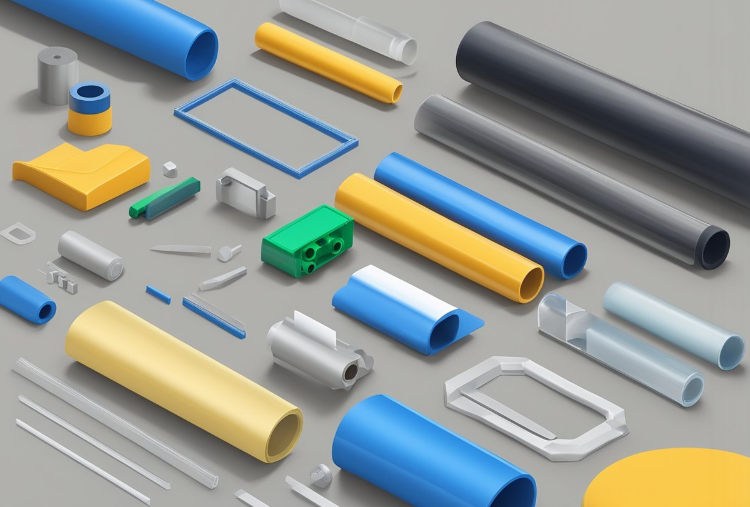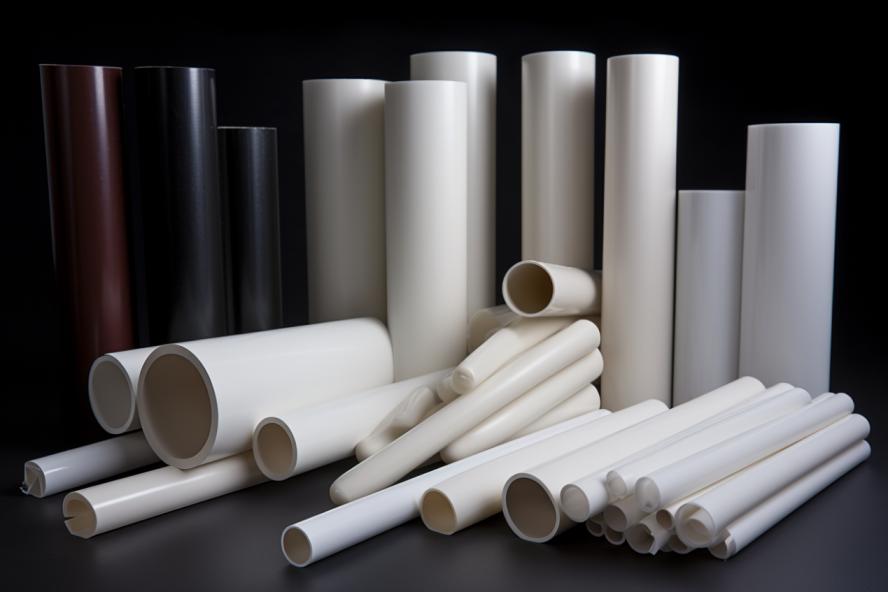Exploring Key Types of PVC Stabilizers: Pioneering Solutions for Your Needs
16/05/2024
Types of PVC Stabilizers play a crucial role in enhancing the durability and longevity of polyvinyl chloride (PVC) products. With advancements in technology and growing environmental concerns, various types of PVC stabilizers have emerged to meet diverse industrial needs. Among these, lead-based, calcium-based, and tin-based stabilizers are prominent. This blog delves into each type’s overview, mechanism, and applications, and sheds light on the manufacturing prowess of Chembroad, a leading player in the chemical industry.
Lead-based Stabilizers: A Legacy in Transition
1.1 Overview
Lead-based stabilizers mark the genesis of PVC stabilization. While once prevalent, they are gradually fading from prominence due to their inherent toxicity. Nonetheless, certain applications still rely on these stabilizers owing to their effectiveness.
1.2 Mechanism
Lead-based stabilizers function by reacting with PVC degradation products, forming stable complexes. This reaction mitigates the adverse effects of degradation, thereby extending the PVC product’s lifespan.
1.3 Application
Historically, lead-based stabilizers found extensive use across multiple industries. However, due to mounting environmental concerns and regulatory pressures, their application is on the decline.
Calcium-based Stabilizers: The Contemporary Choice
2.1 Overview
In the contemporary landscape, calcium-based stabilizers reign supreme as the most commonly utilized PVC stabilizers. They have gained traction owing to their efficacy and relatively lower environmental impact compared to lead-based counterparts.
2.2 Mechanism
Calcium-based stabilizers operate by reacting with hydrogen chloride, a byproduct of PVC degradation. This reaction neutralizes the acidic compound, thereby preventing the formation of hydrochloric acid, which could expedite PVC degradation.
2.3 Application
Their widespread use stems from their effectiveness and eco-friendliness. From construction to packaging industries, calcium-based stabilizers find application across diverse sectors, contributing to the longevity of PVC products.
Tin-based Stabilizers: Resilience in Adverse Conditions
3.1 Overview
Tin-based stabilizers carve a niche for themselves by offering resilience in harsh conditions, particularly at low temperatures. They are favored for applications requiring durability and longevity in outdoor environments.
3.2 Mechanism
The mechanism of tin-based stabilizers involves forming a protective layer on the surface of PVC. This layer shields the PVC from environmental factors, thus preserving its integrity over time.
3.3 Application
Outdoor profiles, window frames, and other structures subjected to extreme weather conditions benefit greatly from tin-based stabilizers. Their ability to withstand adverse environments makes them indispensable in certain industries.
Organic Stabilizers: A Sustainable Approach
4.1 Overview
Organic stabilizers represent a paradigm shift in PVC stabilization, harnessing the power of naturally occurring compounds to preserve the integrity of PVC products. Their eco-friendly nature aligns with the growing emphasis on environmental sustainability in the chemical industry.
4.2 Mechanism
The mechanism of organic stabilizers revolves around scavenging free radicals generated during PVC degradation. By intercepting these radicals, organic stabilizers prevent chain scission, thereby maintaining the structural integrity of PVC materials.
4.3 Application
Driven by environmental concerns and regulatory pressures, the demand for organic stabilizers is on the rise. Industries across the spectrum, from construction to packaging, are increasingly adopting organic stabilizers to meet sustainability goals and ensure compliance with stringent regulations.
Market Status: Dynamics and Trends
5.1 Regulatory Pressures
Stringent regulations governing the use of certain stabilizers, particularly those containing heavy metals like lead, have reshaped the Types of PVC Stabilizers landscape. Regulatory agencies worldwide are imposing stricter limits on the use of hazardous substances, prompting industries to seek alternative stabilizers.
5.2 Environmental Concerns
Growing environmental consciousness among consumers and stakeholders has spurred demand for eco-friendly stabilizers. Industries are increasingly adopting sustainable practices and opting for stabilizers with minimal environmental impact to align with corporate sustainability goals.
5.3 Technological Advancements
Advancements in stabilizer formulations and manufacturing processes have led to the development of more efficient and versatile stabilizers. Innovations such as organic stabilizers and nano-additives offer enhanced performance while addressing environmental concerns.
Tailored Solutions: Types of PVC Stabilizers to Meet Different Needs
6.1 Lead-Free Stabilizers: A Safer Alternative
Lead-based stabilizers, once widely used in PVC production, are being phased out due to their toxicity. Lead-free stabilizers, such as calcium-based and tin-based stabilizers, offer comparable performance without the environmental and health risks associated with lead.

6.2 Calcium-based Stabilizers: Versatility and Effectiveness
Calcium-based stabilizers have emerged as the go-to choice for many industries due to their effectiveness and lower environmental impact. They react with hydrogen chloride generated during PVC degradation, neutralizing acidic byproducts and extending product lifespan.
6.3 Tin-based Stabilizers: Durability in Harsh Conditions
Tin-based stabilizers excel in applications requiring resilience in adverse environments. They form a protective layer on the surface of PVC, shielding it from external factors such as UV radiation and extreme temperatures, making them ideal for outdoor applications.
Innovative Solutions by Chembroad
7.1 Research and Development Excellence
Chembroad invests heavily in research and development to stay at the forefront of PVC stabilization technology. Their team of scientists and engineers continuously explores novel formulations and manufacturing techniques to meet evolving market demands.
7.2 Customized Formulations
Chembroad offers customized stabilizer formulations tailored to specific customer requirements. Whether it’s optimizing stabilizer performance for a particular application or meeting regulatory compliance standards, Chembroad’s flexible approach ensures customer satisfaction.
Shanghai Chembroad New Materials Co., Ltd.: Pioneering Innovation in PVC Stabilization
8.1 Overview
Shanghai Chembroad New Materials Co., Ltd. stands at the forefront of innovation in the rubber and plastic chemical industry. As a high-tech enterprise integrating manufacturing and trade, Chembroad epitomizes excellence in product quality and technological advancement.
8.2 Commitment to Environmental Harmony
At the heart of Chembroad’s ethos lies a steadfast commitment to environmental harmony. With ISO9001 certification and a rigorous adherence to sustainable practices, the company strives to minimize its ecological footprint while maximizing operational efficiency.
8.3 Product Offerings and Applications
Chembroad’s product portfolio spans a diverse range of sectors, including tire manufacturing, rubber tubing, cables, waterproofing materials, and more. With a focus on quality and innovation, Chembroad’s offerings cater to the evolving needs of various industries, ensuring optimal performance and durability.
Why Choose CHEMBROAD (and JALON): A Commitment to Excellence
9.1 Experience in Chemical Industry
With decades of experience in the chemical industry, Chembroad boasts a deep understanding of client needs and market dynamics. Leveraging this expertise, the company consistently delivers innovative solutions tailored to meet customer requirements.
9.2 Customer Support
Chembroad prides itself on its dedicated sales and customer service teams, equipped to provide comprehensive support at every stage of the purchasing process. From product inquiries to technical assistance, customers can rely on Chembroad for prompt and personalized service.
9.3 Flexibility
Recognizing that one size does not fit all, Chembroad offers flexible solutions designed to address specific customer needs. Whether it’s custom formulations or specialized packaging, Chembroad’s research and development teams are committed to delivering tailored solutions that exceed expectations.

Conclusion
In conclusion, Types of PVC Stabilizers are indispensable components in enhancing the durability and performance of PVC products. Lead-based stabilizers, while once ubiquitous, are gradually giving way to safer alternatives like calcium-based and tin-based stabilizers. As industries evolve and environmental consciousness grows, manufacturers like Chembroad play a pivotal role in driving innovation and sustainability in the chemical industry. With a diverse product portfolio and a commitment to environmental harmony, Chembroad continues to spearhead advancements in PVC stabilization and beyond.




